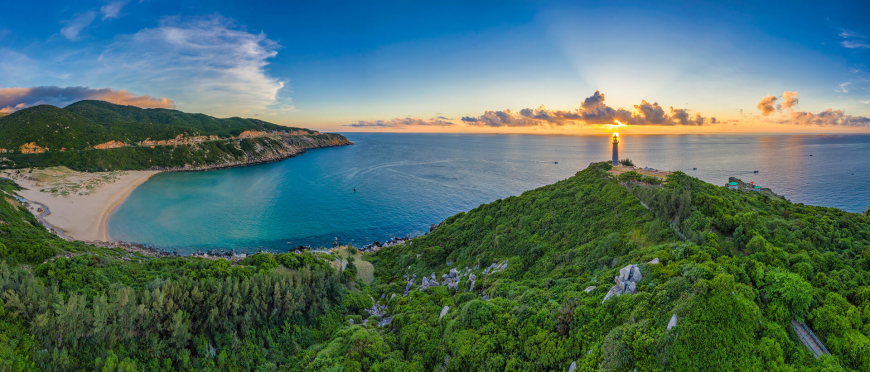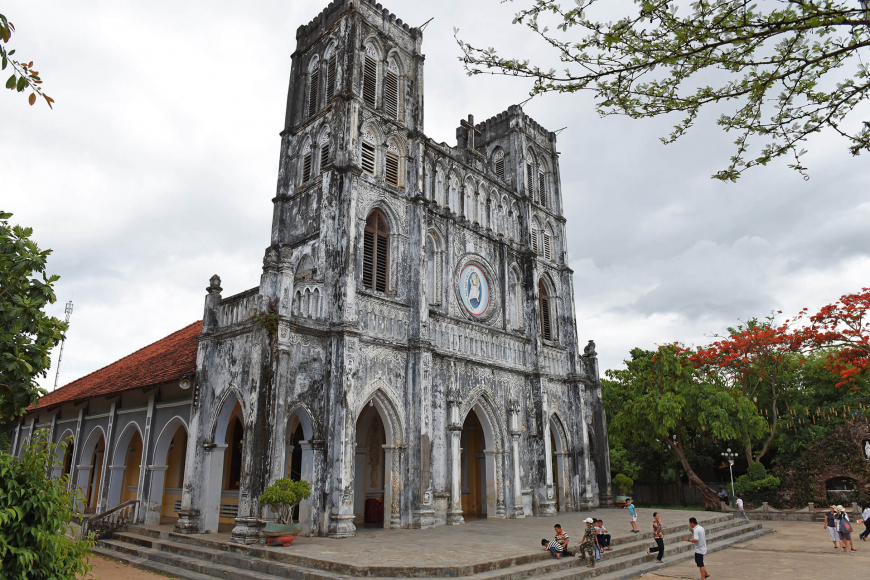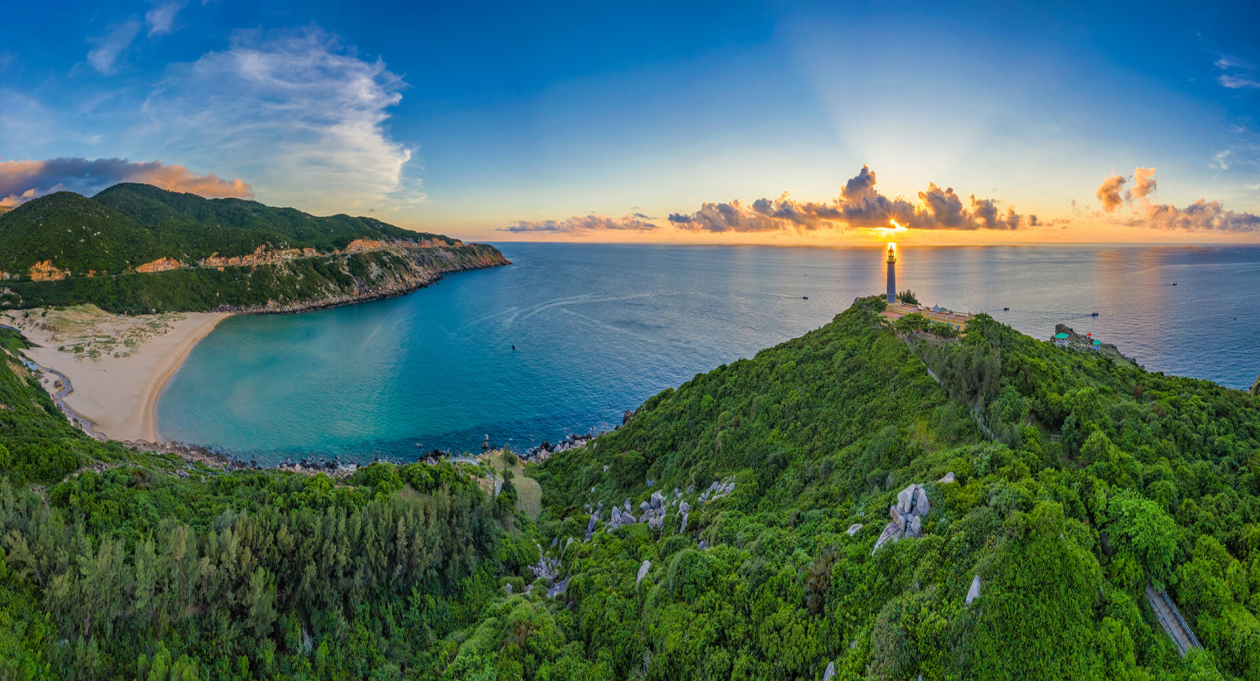Phu Yen is a province in central Vietnam, belted top to bottom by a dramatic mountain range and hemmed in on its eastern border by 200 kilometres of coastline. It’s a primarily agricultural province that is only just growing in popularity as a tourist destination. Its growing reputation is owed to the 2015 film called “Toi Thay Hoa Vang Tren Co Xanh,” or “Dear brother.”
Since the release of this film by Victor Vu, the province's popularity has soared among Vietnamese tourists, but Phu Yen remains – and will for at least another few years – a relatively “off the beaten path” destination. Steep rocky mountains tumble into lagoons and bays; the largest river in central Vietnamese highlands outlets into the ocean here; fishing hamlets and villages cascade down hillsides, accessed by tiny winding roads.

Tuy Hoa City and Beach
Tuy Hoa is the province’s capital city, approximately equidistant from Nha Trang and Quy Nhon. Its location, sandwiched between two much more popular beach destinations, is perfect. It’s easily accessible for anyone making a trip north or south along the coastline, but overlookable enough to be skipped over by crowds and tour buses.
The city is well-planned. A perfect grid of wide and well-paved streets lines the river. Tuy Hoa Beach stretches up the city’s eastern coast, lined by a pretty promenade.

Bai Mon
Bai Mon is a secluded slice of sand surrounded by mountains. Come at dawn and walk first up a winding staircase to Mui Dien Lighthouse to watch the sunrise over the ocean at Vietnam’s second-to-easternmost point (this highest honour is given to Mui Doi, just 50 kilometres to the south). The views over the beach are stunning.
A second staircase leads down to the beach, which feels like a secret tucked between green and grey cliffs.

Source: Instagram - gogosapu
Bai Xep
Bai Xep is the beach that put the province on the map. The film “Dear brother” chose this location for a now-famous scene, and it has now become a local photo-op favourite. Yellow-flowering cactus plants line a flat and grassy hill. The rock bluff juts out over the ocean, leaving a soft lawn for picnics or long and pensive sit-downs with a lover or in solitude. The lush green on the meadow with the crystal blue sea creates a perfect background for a lovely date.
The beach itself lies at the end of a downhill path, where small shacks offer lounge chairs and refreshments.

Da Dia Reef
Bai Xep may be the most famous destination in the province, but Da Dia is perhaps its most spectacular. In the aftermath of a volcanic eruption, this geographical masterpiece ripples like a honeycomb downwards into the ocean which cooled the magma. Geometric rock formations stack on top of each other like something out of Minecraft.
A nearby beach offers food and drinks along the shoreline, and a pathway leads northwards up the cliffs to another lighthouse overlooking the waters and the basalt rock boulders.

Nhan Tower
Nhan Tower is an ancient tower of Cham people, constructed at the late of 11th century. Standing at the height of 64 metres on Nhan mountain peak, Da Rang River, Nhan Tower and its landscape became the symbol of Phu Yen. Visitors can admire the beauty of Tuy Hoa City, Da Rang River and 4 bridges from here.

Mang Lang Church

On the way to Nhan Tower, don’t miss a chance to visit the serene ancient Mang Lang Church. Located near the Ky Lo River, its unique name comes from the name of a tree called Mang Lang - a large canopy, oval leaves, and purple flowers. The church covers 5,000m2 with lush trees and rows of Sa-ke (Artocarpus altilis) trees. The church was designed in the Gothic architectural style with two steeples, one on each side and an eye-catching pyramid styled lobby. What impresses visitors the most is the chancel, with colourful windows, yellow hue walls and a wooden ceiling. The church opens to welcome people to find peace and quiet moments. Here, visitors also find well-preserved meticulous sculptures telling the story of St. Andrew Phu Yen in the basement of the church.



